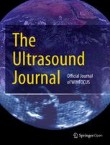Stab wound of the superficial femoral artery early diagnosed by point-of-care Doppler ultrasound
Traumatic vascular injury of the limbs has the potential to cause substantial patient morbidity and mortality, and therefore, early recognition and treatment are crucial to improve outcomes. While patients wit...
